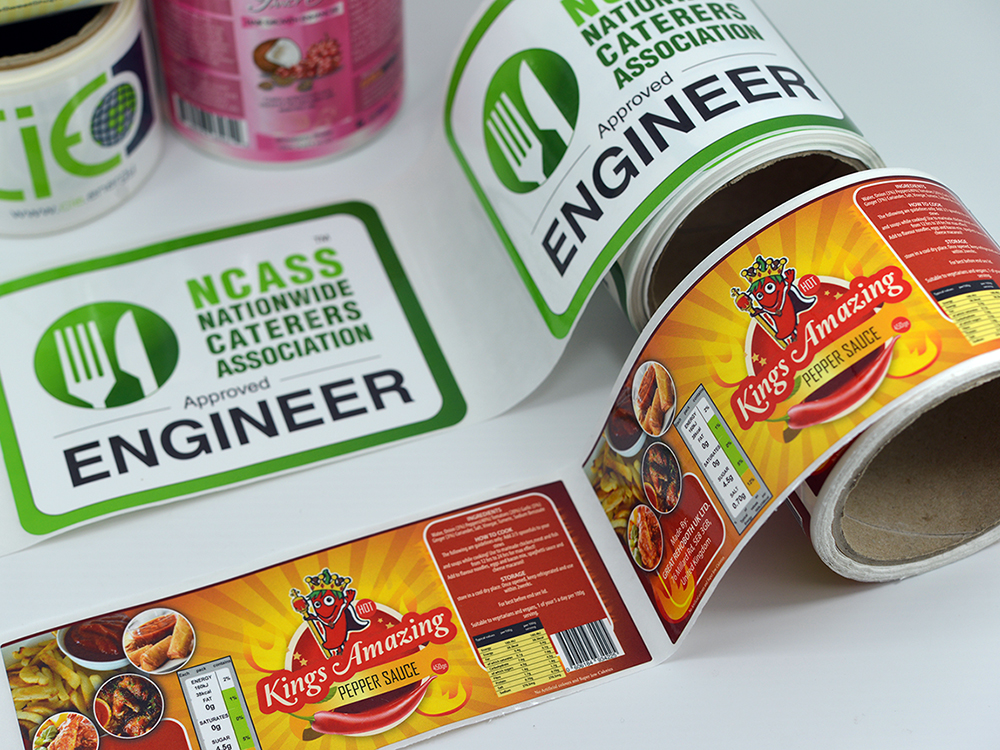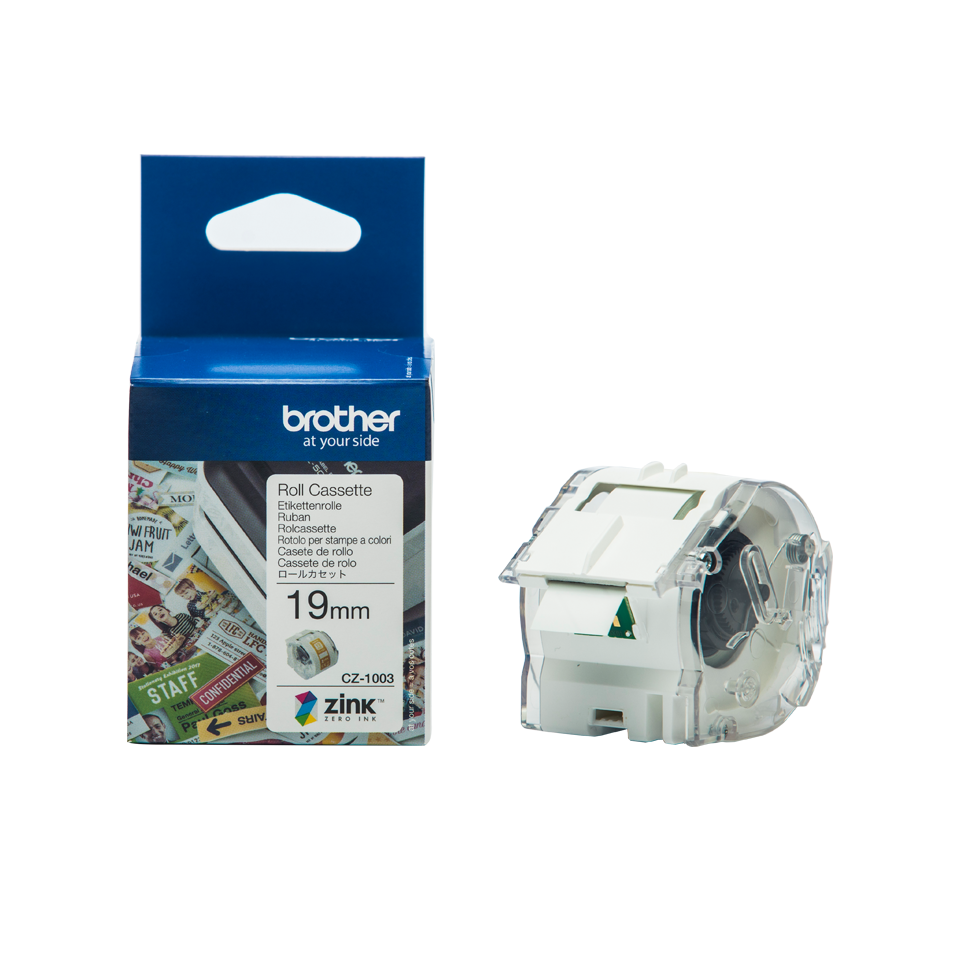Reliable barcode printers for daily printing.
Discovering the Advantages of Space Labels and Their Compatibility With Full-Colour Labels
Blank tags, frequently forgot, hold a secret expertise on the planet of advertising and marketing and product administration. Their versatility and versatility throughout different markets make them an important property. Paired with full-colour labels, they can boost item recognition, stock management, and advertising performance. The striking contrast they create can catch customer attention and convey brand values. Intriguingly, the mix of blank and full-colour labels can promote an one-of-a-kind aesthetic that promotes distinction and quality in a competitive marketplace. The concern then develops, just how can one maximize these advantages?
Recognizing the Basic Concept of Blank Labels
While they may appear straightforward at initial look, empty tags hold a substantial area in different markets. They develop the foundation of item identification, stock management, and quality assurance. These seemingly harmless devices of communication are, as a matter of fact, giants of info.

Their blank nature gives them a global application, ready to be personalized according to the customer's needs. They can be published on making use of numerous techniques like thermal transfer, straight thermal, laser, or inkjet, thus making them versatile.
Various shapes and sizes cater to the myriad needs of sectors, varying from the little round tags on pharmaceutical vials to large rectangular ones on delivery pet crates. Hence, empty tags, in their simplicity, carry out crucial functions that keep industries running efficiently.
The Unrivaled Flexibility of Blank Labels
Blank tags, in their simple visibility, symbolize an exceptional versatility that sets them apart - full-colour labels. This adaptability hinges on their capability to be made use of across myriad applications and markets. From retail and logistics to drugs, they function as a flexible yet durable device in managing, organising, and recognizing products
Their customisability is another impressive aspect, sustaining a series of printing innovations. Whether it's thermal, laser, or inkjet printing, empty tags can suit different methods, accommodating specific requirements.
Additionally, they can be customized to numerous forms, sizes, and materials, demonstrating a versatility that exceeds the common limitations of pre-printed labels. This permits on-demand printing, giving organizations with the flexibility to style and print labels as required.
Essentially, the versatility of empty labels originates from their simplicity, adaptability, and compatibility with diverse printing innovations and materials. It's these qualities that make them an indispensable asset in various industries.
Cost-Effectiveness: A Secret Advantage of Blank Labels
One considerable advantage of empty labels is their cost-effectiveness. This can be appreciated in a number of ways, such as the decrease in printing costs, the savings made from bulk acquisitions, and the minimization of waste generation. Each of these elements adds to making empty tags a budget-friendly option for services.
Lowering Printing Expenses
One efficient method is by decreasing printing expenses with the use of empty labels. Unlike pre-printed labels, empty tags eliminate the demand for pricey color printing, thus conserving on the ink price. The incorporation of blank tags can be a strategic decision for services intending to boost cost-effectiveness and efficiency in their procedures.

Mass Acquisition Cost Savings
Many businesses find that buying empty labels in mass can result in substantial savings, additionally boosting their cost-effectiveness. The reasoning behind this is simple; providers usually provide cost breaks for bigger orders, reducing the unit expense of each label. This, subsequently, reduces the general expense on tags, bring about greater earnings margins. In addition, having a large supply of labels available minimizes the regularity of reordering, saving both time and administrative expenses. Bulk buying can also ensure a steady supply, preventing any potential disturbances in manufacturing due to lack of labels. However, businesses have to stabilize these advantages against storage space restraints, as big quantities of tags call for considerable storage space.
Minimizing Waste Generation
While empty tags provide several advantages, their prospective to minimize waste generation can not be overemphasized. This attribute contributes considerably to their cost-effectiveness. By permitting users to print just what is needed, empty tags eliminate the excess typically related to pre-printed labels. This, in turn, lowers waste and the costs associated with lose disposal. On top of that, blank labels' flexibility enables final changes or updates without the need to discard outdated or wrong tags, additionally diminishing waste development. Furthermore, by lessening making use of unneeded materials, blank labels advertise eco-friendly techniques. Hence, the use of blank tags not just proves cost-efficient however additionally lines up with lasting and liable service practices.
How Space Labels Enhance Branding Opportunities
The function of blank tags in boosting branding possibilities can not be underestimated. By offering adaptability in layout options, they enable companies to craft distinct, engaging visuals that mirror their brand identity. Just as crucial is the function these tags play in increasing brand name visibility, working as a consistent tip of the company to customers.
Adaptability in Style Selections
Supplying an exceptional level of versatility, blank tags present businesses with unlimited possibilities for tailoring their product packaging. They can be made with any type of logo, text, or visuals and can be printed in any type of colour, allowing services to tailor their labels to their specific brand identification. With the ability to change styles quickly and cost-effectively, business can reply to market patterns and consumer feedback. This versatility likewise permits seasonal packaging variants or promotional campaigns. Space tags, then, are not just a useful demand, yet a calculated device for business branding. Utilized smartly, they can capture consumer interest, interact brand name values, and distinguish items in a jampacked marketplace (blank labels). They are a testament to the power and potential of versatile style selections.
Maximising Brand Visibility
To maximise brand visibility, empty tags function as a very reliable device. They supply a canvas for creativity, making it possible for an organization to apply personalized layouts that record its special identification. This versatility guarantees the brand is blank labels not constrained to pre-made templates, thus giving a possibility to stick out in the congested market. Additionally, blank tags can be used across various line of product, keeping consistency in brand discussion. In combination with full-colour tags, they produce a striking visual comparison that gets consumer attention. This strategy boosts recognition and recall, crucial facets of brand name visibility. By leveraging the capacity of empty labels, organizations can substantially amplify their brand name's market visibility.
The Symbiotic Partnership Between Blank and Full-Colour Labels
Although varying in their usage, blank and full-colour labels have an unique, symbiotic relationship that improves their specific value. Blank labels, with their minimal layout, offer adaptability and versatility, making them ideal for various applications. Their simplicity enables customisation, giving a canvas for creativity and personalisation.
On the other hand, full-colour labels supply aesthetic vibrancy and can rapidly attract interest. They are typically used to convey in-depth details or to advertise a brand name's identity. Their impact is amplified when coupled with blank labels. Together, these two kinds of tags develop an unified equilibrium. The empty tags can take in and reduce the effects of the strength of full-colour tags, stopping them from frustrating the customer's detects. Simultaneously, the full-colour tags intensify the effectiveness of empty labels, keeping them from showing up too ordinary or dull. This symbiosis shows the indispensable role each plays in efficient labelling.
Real-world Examples of Efficient Blank and Full-Colour Tag Assimilation
Have you ever contemplated exactly how common brands use a blend of empty and full-colour labels to optimize their product allure? Its packaging uses a contrast of empty and full-colour tags, emphasizing the item's sleek aesthetic appeals.
Furthermore, Coca-Cola effectively makes use of full-colour labels on its timeless red canisters, with blank tags on its 'Zero Sugar' variation, discreetly conveying a much healthier option. Nestlé also especially uses blank tags for its 'Pure Life' water bottles, contrasted with full-colour labels for its flavoured water choices. These real-world instances demonstrate the efficient use of blank and full-colour tags in boosting product charm and connecting brand name values, showing that a sensible mix of both can certainly be a successful advertising strategy.
Final thought
In verdict, the assimilation of blank tags with full-coloured tags offers companies a special, cost-efficient branding strategy. Their flexibility across different industries improves item recognition and supply monitoring, while their compatibility with full-colour tags raises marketing effectiveness. By striking a balance between both, firms can record customer focus, advertise brand name distinction, and strengthen brand name identity in a competitive industry. The sensible use these tags can hence generate considerable organization benefits.